All aboard the historic Cumbres and Toltec Scenic Railroad! I think I can, I think I can, I think I can, seemed to be the chant of the 1925 steam engine as it billowed out black and white smoke. Soot filtered through the air landing on anything in its way. Welcome to the colorful journey from Chama, New Mexico to Osier, Colorado in historic fashion.
Route and Timing
Built in 1880, the Cumbres & Toltec Senic Railroad is an historical remnant, representing a remarkable continuation of a vibrant tradition established by pioneers who carved out the west. This Historic coal-fired, steam-driven, narrow-gauge train, has been chugging through the mountains of New Mexico and Colorado, ascending the 10,015-foot Cumbres Pass, since 1881. This two-and-one-half hour ride, each way, with lunch at Osier, crosses the border eleven times as it rambles through 26 miles of astonishingly beautiful country. We chose the second weekend of October because the fall-colored foliage is on display. It was gorgeous, but we were about one week late, and the trees had dropped many of their leaves on the Colorado side of Cumbres Pass.
The Morning Begins
Our morning began with breakfast at Fosters Restaurant located in the historic Fosters Hotel. Fosters Hotel is the oldest commercial structure in Chama. It was built in 1881 to accommodate guests traveling between Denver and Silverton or Santa Fe on the Denver and Rio Grande Western Railroad. The restaurant accommodates less than 35 people. With only one courteous, but overwhelmed waitress, service was a bit slow.
Just a short walk across the street and we boarded our train bound for the high country. We boarded “J” car of the twelve-car train, including two locomotives and one coal car. Our coach car was comfortable and outfitted with double bench seats that could be swiveled to face front, back, or toward the windows, we chose to face the windows. In addition to the six coach cars, the train was made up of one gondola car, which is an open-air observation car, one parlor car which served snacks and beverages, film, and few souvenirs, and one tourist car. All have been refurbished.
The rugged beauty of this area of New Mexico and Colorado always inspires me. Here you will observe beautiful, sweeping, soft meadows, as well as rough, rugged, craggy rock formations. This is the home of elk, deer, hawks, eagles, and many other magnificent as well as miniscule creatures.
We are on The Roll
The first few miles after leaving the Chama Railyard are closed in by dense trees and high banks on both sides of the track. The Docent told us to be patient for a few miles when the view will improve for photography, and improve it did.
We rumbled away from the station yard, over the Rio Chama, and began the long 4% grade toward Cumbres Pass. A little over four miles in, we encountered our first stop at Lobato. There is not much left in Lobato, just some dilapidated fence and cabin. It is a picturesque setting surrounded by alpine loveliness, a partial water tower, and Lobato Trestle built in 1883.
The water tank was constructed for a movie in the 1970s and later used in the blockbuster movie Indiana Jones and the Last Crusade. The tank was knocked off its stand in 2006, due to age and high winds, but the platform and standpipe remain well preserved.
The trestle is still in use today, however, because of weight restrictions, only one locomotive at a time is allowed to cross. Because we had a “double-header”, or two steam engines, we had to stop and separate, cross one engine at a time, and rejoin on the other side. Can you say spooky!
I think I can, I think I can, I think I can, hum the steam engines, as they rumble and strum through the valleys, and up the mountainside tracks, carrying us along on an unforgettable journey. Valleys replete with colorful vegetation, babbling streams attracting fly-fishermen, and grand mountain panoramas with their heads in the heavens.
Next Stop Cumbres Pass
Because of the 4% grade on the climb from Chama. The second engine, known as a helper engine, had to be uncoupled at Cumbres Pass, turned around, and return to Chama. Most of the facilities at the pass were built by the railroad to support the turning of the helper locomotives and provide water to locomotives after the climb.
Cumbres Station sits on the Continental Divide Trail at an elevation of 10,015 ft. It represents the transition line between Colorado and New Mexico. Northbound adventurers head toward Colorado’s San Juan Mountain Wilderness while southbound adventurers enter New Mexico’s Carson National Forest. Today it is the mid-point stop on the Cumbres and Toltec Scenic Railway journey.
The site consists of the car inspector’s house, water tank and standpipe, remnants of the extensive snow shed, and the section house, which replaced the original depot after it was demolished in the 1950s.. There is a second track running alongside enabling the railroad to reconfigure the trains and prepare them for their return.
After losing our helper engine and taking on water, it’s time for our party to ride the rails toward Osier station. From Cumbres Station, it’s a leisurely 2.5% grade, descending through the Cumbres Loop, known to railroaders and locals as “Tanglefoot Curve”, and into the Los Pinos Valley.
We continue to lose elevation as we descend north toward the valley floor. Once we bottom out, the track bends south and we begin an upward climb towards Osier Station. About a mile and one half before our turnaround and lunch stop at Osier, we cross Cascade Trestle, which is taller than the Lobato Trestle As we cross we peer down at rusty old girders suspending us 137 feet above the stream below.
At Osier Station, lunch is prepared fresh every morning beginning at 4:15am, the ingredients and supplies are trucked in from Antonito. We had our choice of a hot turkey meal, meatloaf, or an extensive soup and salad bar. Not only was it fulling, it was remarkably tasty considering the amount of people they are cooking for.
While in Osier we met a group of travelers who boarded their train in Antonito. We were finishing our meal as they were beginning theirs. We slipped out, and climbed on their Chama bound train, and headed back to town.
We are Headed Home
I would chronicle the return journey from Osier to Chama, but you can simply read backward from here to the beginning. However, the return trip is just as majestic. The fall colors in the Colorado and New Mexico mountains are a visual delicacy, food for the soul. Slowly winding our way through the Colorado and New Mexico mountains, we sigh with contentment as we observe the last kiss of sun delicately settling on the valleys below.
When You Go on the Cumbres and Toltec Scenic Railroad:
Whether you travel in the spring, summer or fall, be sure you dress in layers, the temperatures can change quickly in the mountains. There is an old saying in Colorado, “If you don’t like the weather, wait five minutes and it may be different.”
Bring hats, sunglasses and sun screen are always a must, and bug spray is advised especially in summer.
You may want to wear older, dark clothing. At times, the smoke and soot will swoop down upon you and leave a lasting impression.
The Cumbres & Toltec Railroad provides a helpful Passenger Info page on their web site.
For directions to the gateway towns of Chama or Antonito, the two starting points of the trip, see their excellent MAPS & MILES page.
Follow us on social media!
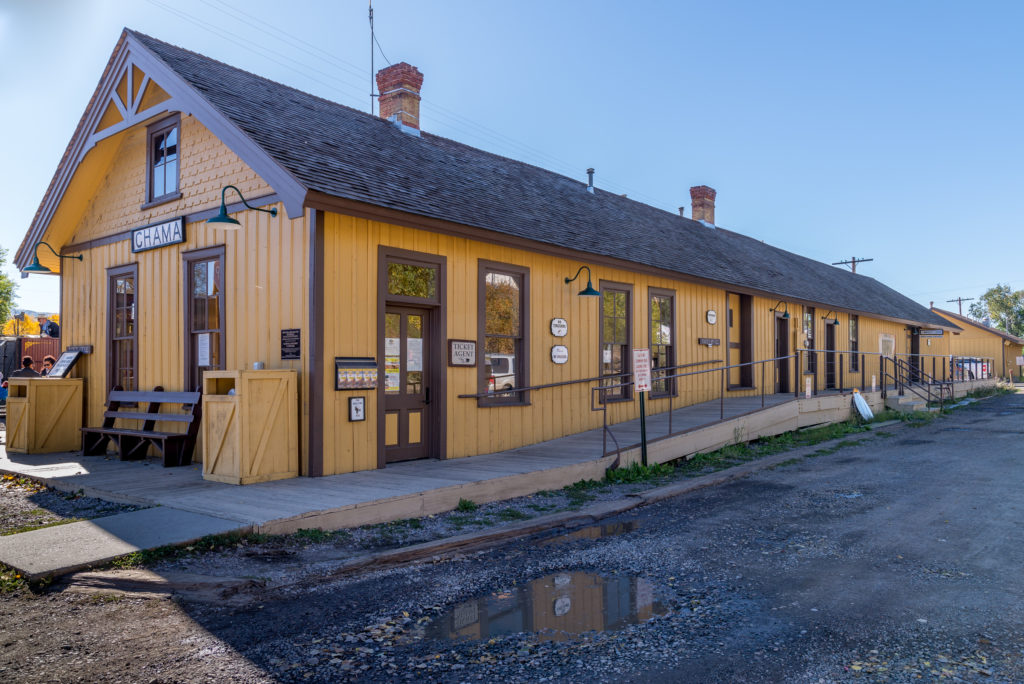
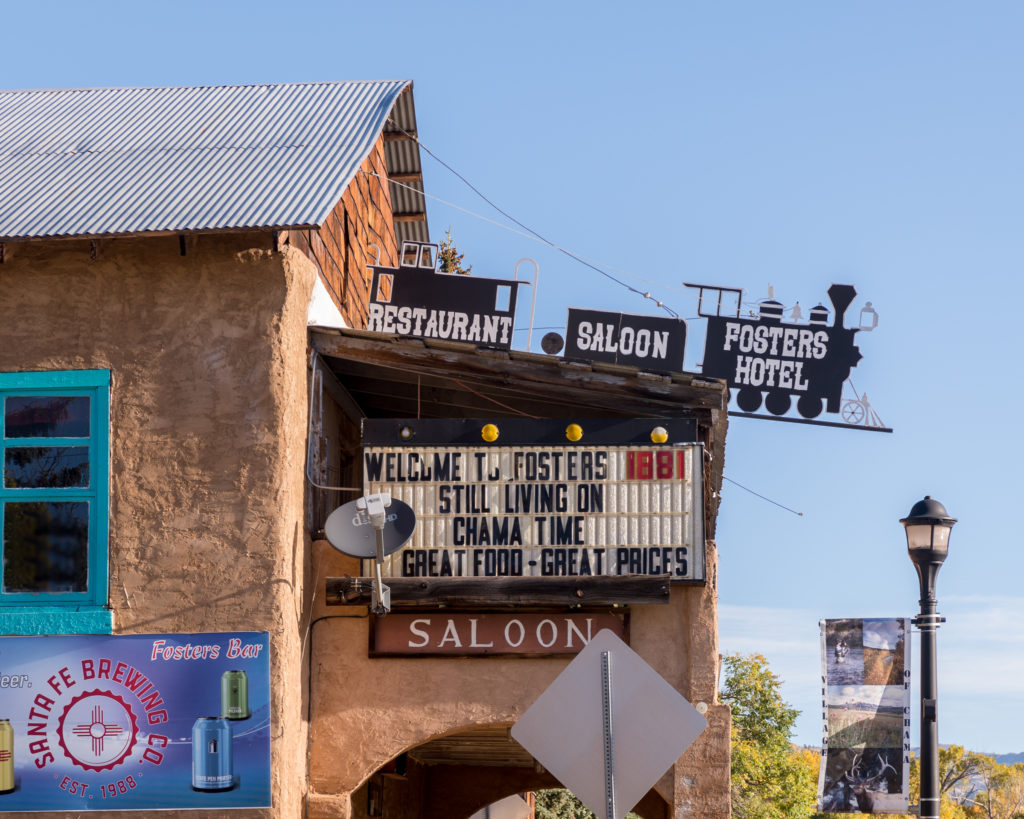
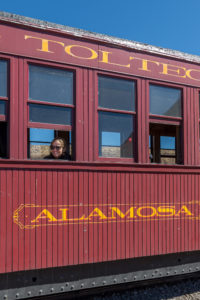
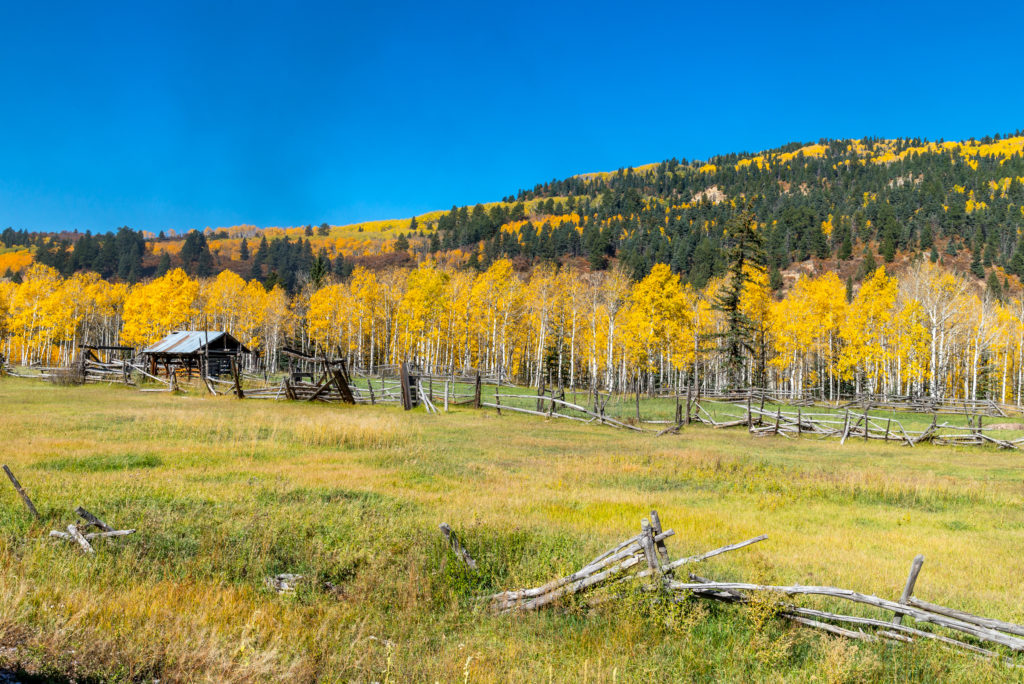
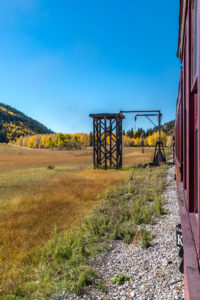
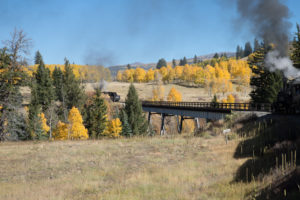
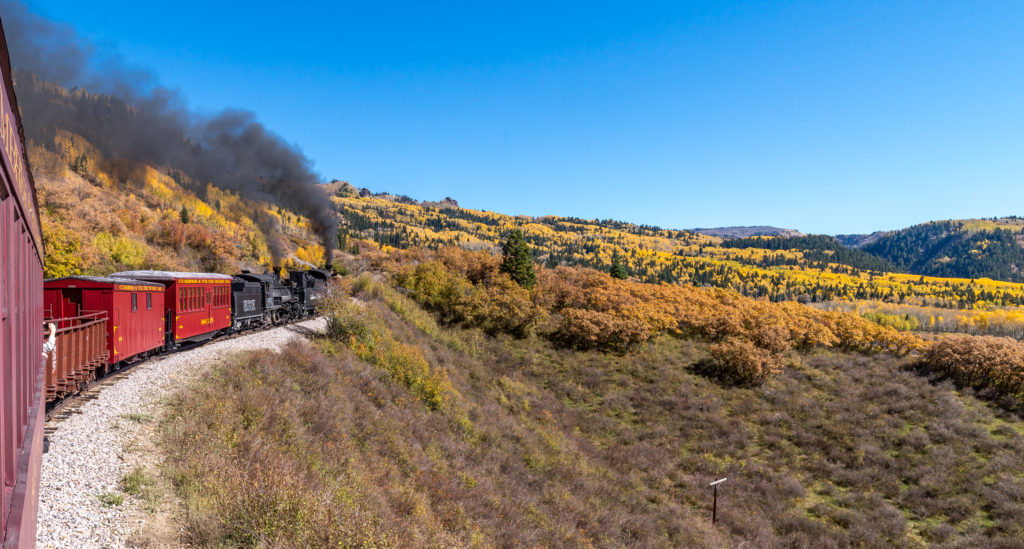
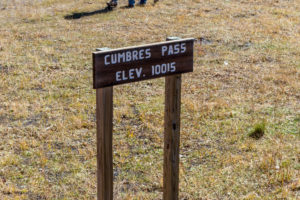
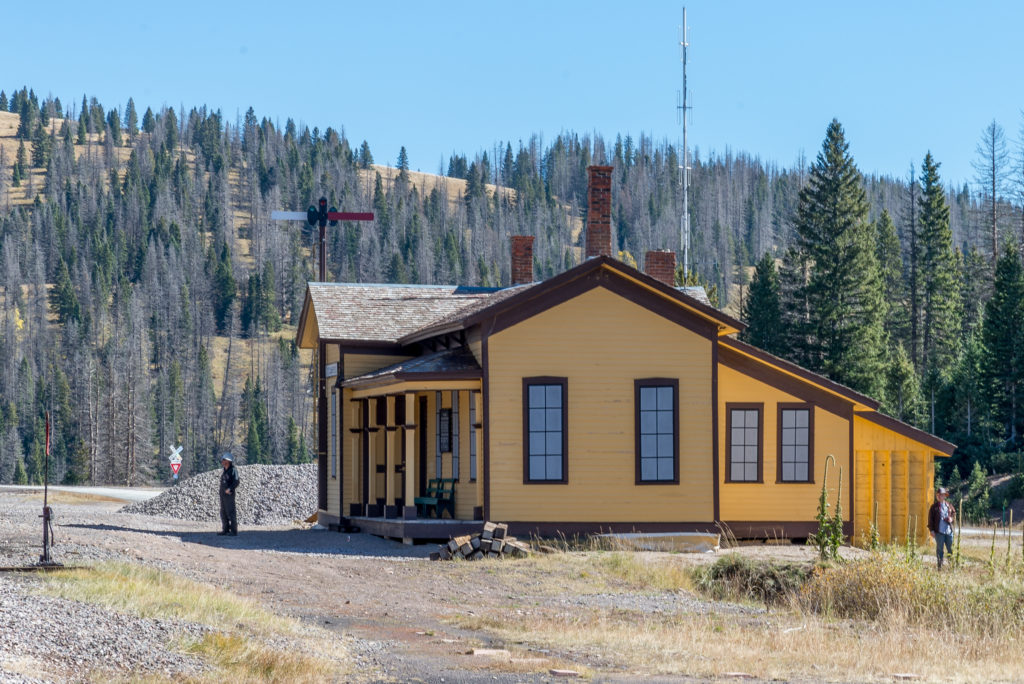
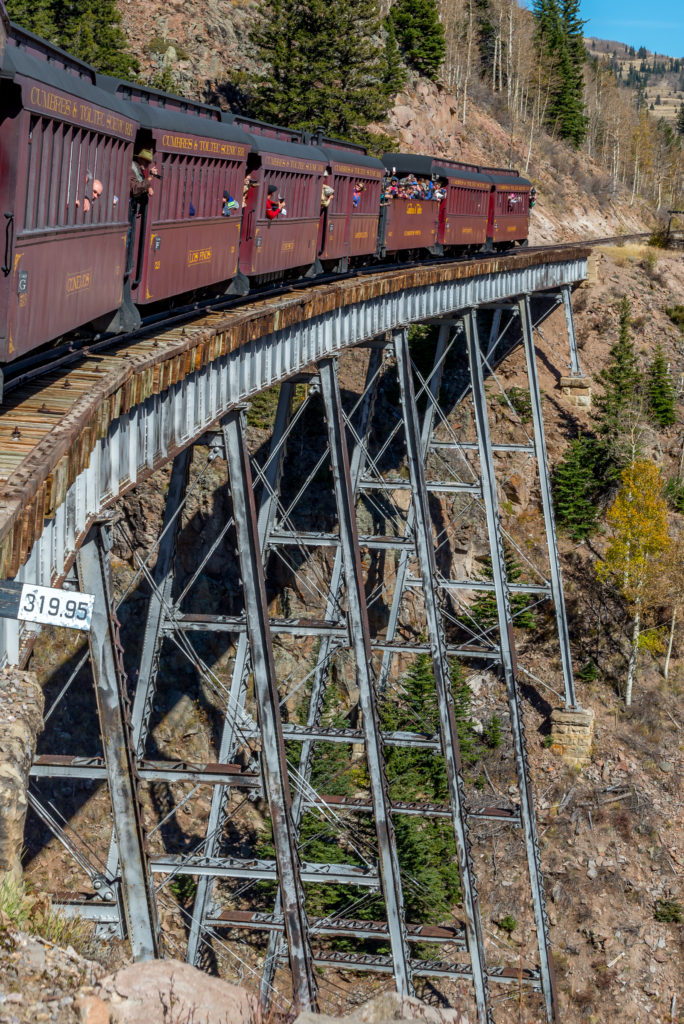
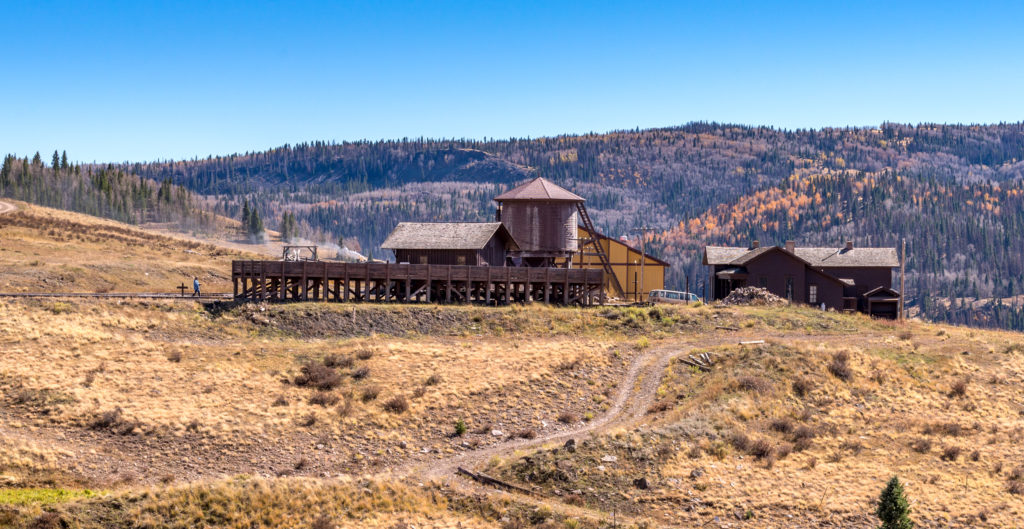
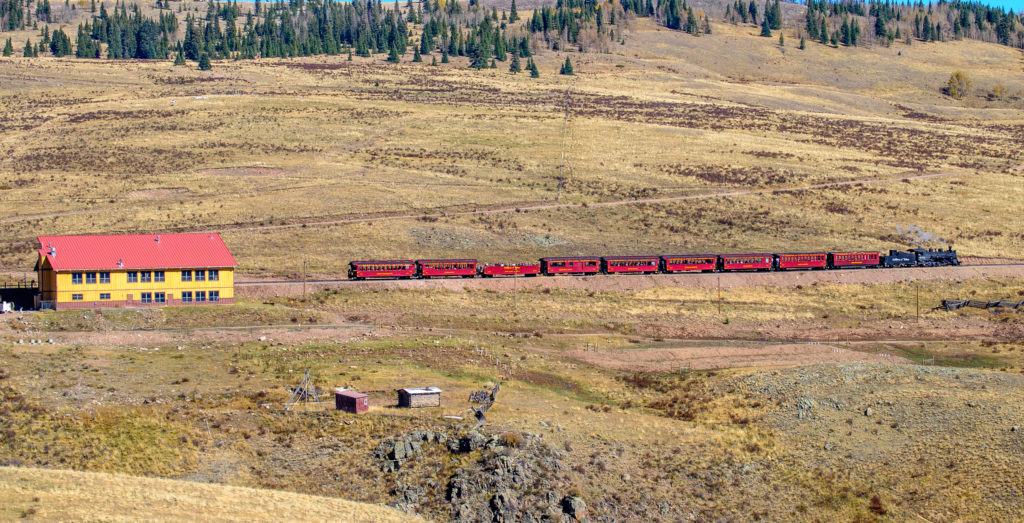
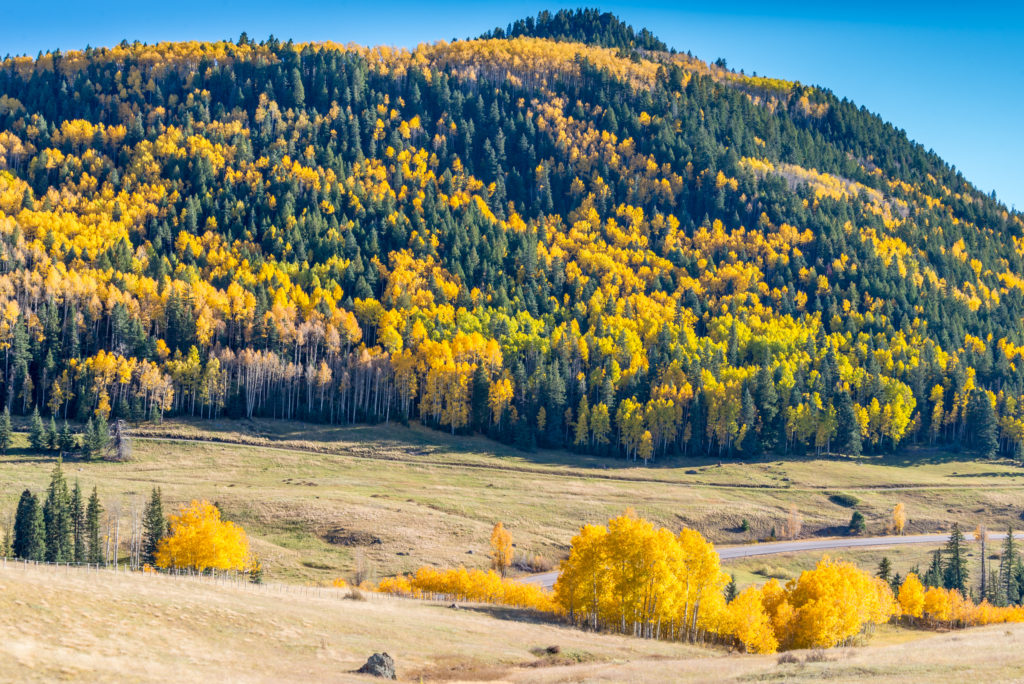
No comments yet.